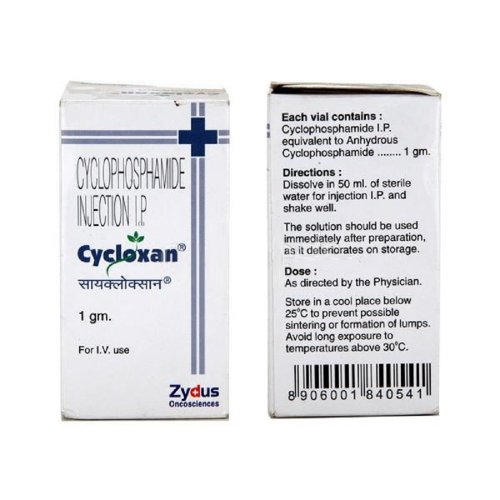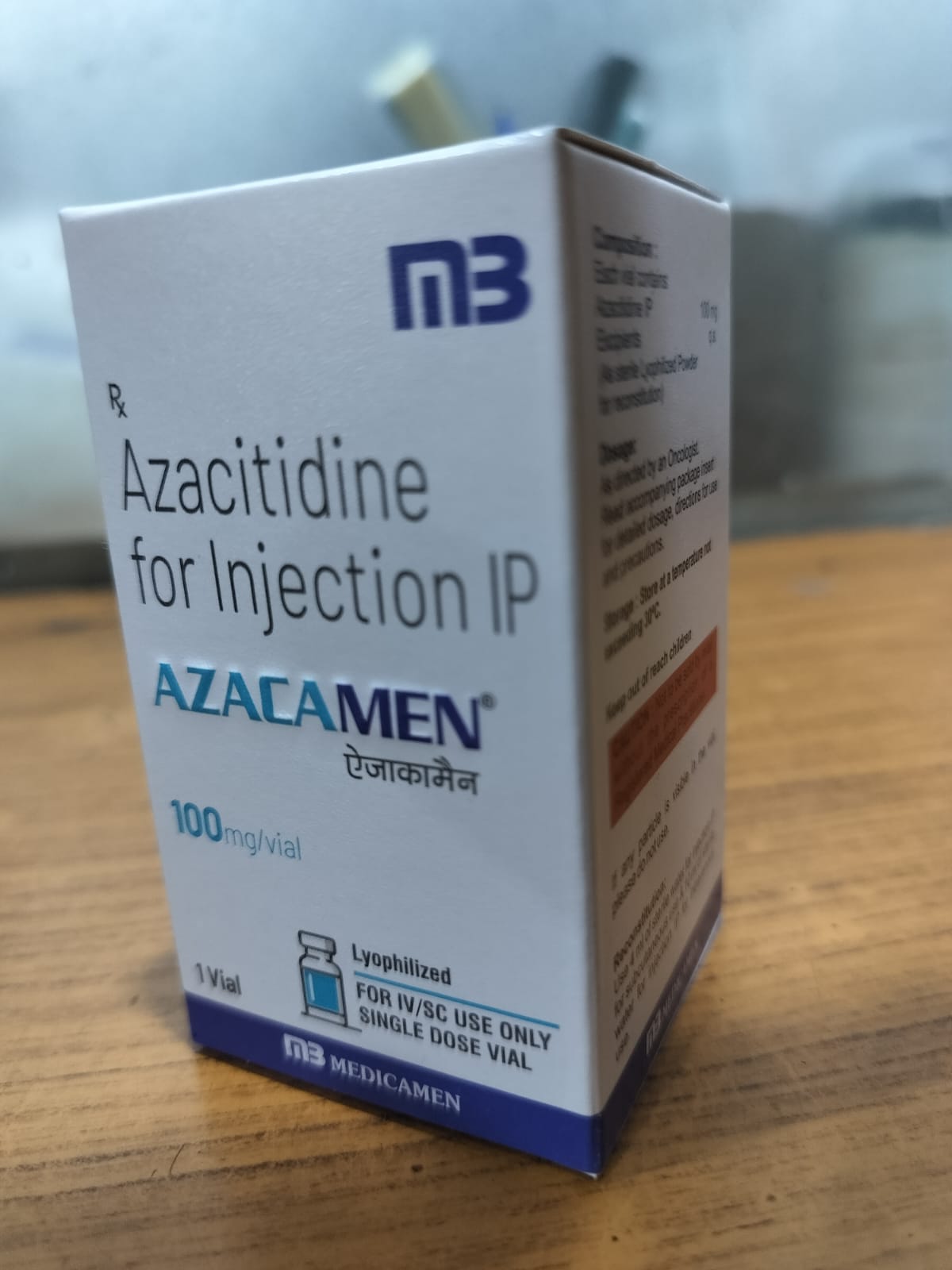Product Intro:
Cycloxan is widely used in oncology and immunosuppressive therapy. It is a cytotoxic agent that targets rapidly dividing malignant cells and is also effective in treating autoimmune conditions such as lupus and nephrotic syndrome. Cycloxan is available in injectable form for intravenous or intramuscular administration.
Uses (Indications):
Cycloxan is used in the treatment of:
-
Breast cancer
-
Lymphomas (Hodgkin's and non-Hodgkin’s)
-
Leukemias (e.g., acute lymphoblastic leukemia, chronic lymphocytic leukemia)
-
Ovarian cancer
-
Multiple myeloma
-
Nephrotic syndrome in children and adults
-
Systemic lupus erythematosus (SLE)
-
Bone marrow transplantation conditioning
Storage Instructions:
- Store at below 25°C.
- Protect from light and moisture.
- Once reconstituted, the solution should be used immediately or as per guidelines (usually within 24 hours if refrigerated).
- Do not freeze the reconstituted solution.
How It Works (Mechanism of Action):
Cyclophosphamide is an alkylating agent that becomes active in the liver. It binds to DNA in cancer cells and forms cross-links, which prevent the DNA from replicating and transcribing. This leads to cell death, particularly in rapidly dividing cells like cancer cells. It also suppresses the immune system by depleting B and T lymphocytes.
Side Effects:
Common Side Effects:
- Nausea and vomiting
- Loss of appetite
- Hair loss (alopecia)
- Fatigue
- Changes in skin or nail color
- Low white blood cell count (leukopenia)
Serious Side Effects:
- Hemorrhagic cystitis (bladder inflammation with bleeding)
- Severe bone marrow suppression
- Risk of infections due to immunosuppression
- Infertility (in both men and women)
- Liver toxicity
- Secondary malignancies (e.g., leukemia with prolonged use)
Dosage (Typical Recommended Dose):
Dosage varies depending on the indication, body surface area, renal function, and concomitant therapies.
- For cancer treatment:
-
IV dose: 500–1000 mg/m² every 2–3 weeks, often in combination with other chemotherapeutic agents.
- For immunosuppression (e.g., lupus):
-
IV dose: 500 mg to 1 g once monthly or every 2 weeks, depending on protocol.
Always follow physician-prescribed dosing protocols.
Method of Administration:
- Cycloxan is administered intravenously (IV) or intramuscularly (IM) after reconstitution with sterile water or normal saline.
- Should be given slowly over several minutes, or as an infusion diluted in IV fluids over 30–60 minutes.
- Pre- and post-hydration are recommended to reduce the risk of bladder toxicity.
Precautions:
- Ensure adequate hydration to prevent bladder toxicity.
- Monitor blood counts regularly – risk of neutropenia and thrombocytopenia.
- Use contraception during and for months after treatment – teratogenic and gonadotoxic.
- Avoid live vaccines during treatment.
- Caution in patients with renal or hepatic impairment.
- Regular urinalysis is required to monitor for hematuria (blood in urine).
Drug Interactions:
- Allopurinol: May increase bone marrow suppression.
- Warfarin: May alter INR levels, requiring dose adjustments.
- Phenobarbital and rifampicin: May alter metabolism of cyclophosphamide.
- Live vaccines (e.g., MMR, BCG): Avoid during treatment due to immunosuppression.
- Cardiotoxic agents (e.g., doxorubicin): Increased risk of heart toxicity.
Allergies (Warnings for Allergic Reactions):
- Hypersensitivity to cyclophosphamide may present as rash, itching, fever, chest tightness, or difficulty breathing.
- Severe cases may require discontinuation and emergency medical intervention.
Overdose Information:
- Symptoms may include severe bone marrow suppression, bleeding, hematuria, and severe infections.
- There is no specific antidote. Treatment is supportive, including transfusions, antibiotics, and growth factors.
- Immediate hospitalization and symptomatic care are critical.
Missed Dose Instructions:
- If a dose is missed, contact the treating physician immediately.
- The physician will decide whether to reschedule or skip the dose based on treatment protocol.
- Do not double the next dose to make up for a missed one.
Additional Notes:
- Mesna is often co-administered to protect the bladder lining from toxic metabolites.
- Patients should report blood in urine, persistent nausea, unusual fatigue, or signs of infection immediately.
- Regular monitoring of CBC, liver/kidney function tests, and urinalysis is essential.
- Cycloxan may impair fertility – discuss fertility preservation options before starting therapy.
- Patient counseling and informed consent are important due to potential long-term risks.



